Product Overview
Prepare yourself for a fantastic seven-day adventure exploring Cairo, Luxor, and Alexandria and immersing yourself in Egypt's timeless beauty and rich culture. When you choose Landious, you can count on excellent service, including private A/C transportation, comfortable accommodations, and a knowledgeable Egyptologist tour guide.
Throughout the journey, you'll be amazed by the breathtaking ancient Egyptian marvels, from the iconic Giza pyramid complex to the historic Khan El Khalili Bazaar. This experience guarantees an unforgettable exploration of Egypt's most captivating cities. Discover some of the most mesmerizing monuments and artefacts ever created in history in Cairo, Alexandria, and Luxor, such as the Giza pyramid complex, Saqqara Step Pyramid, the National Museum of Egyptian Civilization (NMEC), Salah El-Din Citadel, Khan El Khalili Bazaar, Valley of the Kings, Hatshepsut temple, Karnak temple, Qaitbey Citadel, the Catacombs, and the Library of Alexandria, along with many more.
Egypt's tourist attractions await you, so make your dream vacation a reality and book with us now.
What's Included
- Flight tickets Cairo/Luxor/Cairo
- 3 night accommodation in Cairo
- 3 night accommodation in Luxor
- Meeting and assistance in the airport
- Private tour guide
- All transfers by private air-conditioned vechile
- Dinner on a Nile cruise
- Entry fees to all mentioned sites
- All service charges and taxes
What's not Included
- International airfare
- Egypt entry visa
- Gratuities
What to Expect
Meet & Assist Service in Cairo International Airport

- When you land at Cairo Airport on the first day of your trip, our representative will warmly welcome you. You'll then be taken to your hotel in a comfortable, air-conditioned car. Spend the night in Cairo and prepare to kick off your adventure the next day.
Dinner on a Nile Cruise in Cairo

- As the sun sets over the horizon, you will embark on a captivating dinner cruise along the historic Nile River. On this enchanting journey, you can unwind and take in the mesmerizing sights while entertained by a vibrant belly dancing performance accompanied by a folklore band. Additionally, you will experience the awe-inspiring Tannoura dance, a majestic display inspired by Egypt's rich whirling dervishes tradition. This is an evening you won't soon forget.
- After a day of exploration, you will return to your hotel for a restful overnight stay.
Tour to Giza Pyramids

- On the morning of the second day of your stay, you'll begin an exciting tour of ancient Egyptian civilization with your guide. Your first stop will be the Giza Plateau, home to the ancient pyramids of Cheops, Chephren, and Mycerinus, along with six smaller pyramids, the Great Sphinx, and the Valley Temple. This complex dates back to the 4th dynasty, around 2400 years B.C.
Tour to the Grand Egyptian Museum
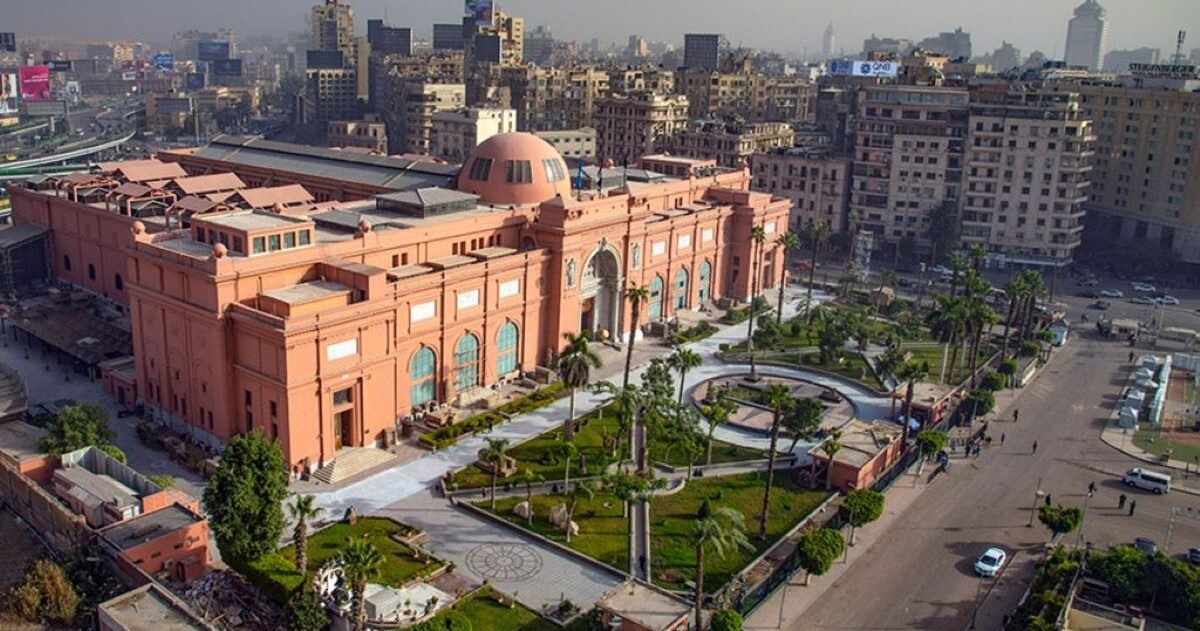
- Afterwards, you'll visit The Grand Egyptian Museum, also known as the Giza Museum, approximately 2 kilometres from the Giza pyramid complex. The museum will host over 100,000 artifacts from ancient Egyptian civilization, including the complete Tutankhamun collection, many of which will be displayed for the first time. With 81,000 m2 of floor space, it will be the world's most significant archaeological museum.
- Lunch
Tour to Saqqara Necropolis

- You'll explore Egypt's most significant archaeological site while discovering the country's oldest Pyramids. An ancient burial ground served as the resting place for nobles for approximately 3500 years, especially when nearby Memphis was the capital city. In addition to the oldest Pyramid site, it is filled with smaller pyramids, tombs, and funerary complexes.
- The Step Pyramid of Djoser is a remarkable structure built by Imhotep, one of the earliest recognized architects in history, during the reign of Pharaoh Djoser around 2630 BCE. This pyramid, over 200 feet tall with a base of 358 feet by 397 feet, represents the Egyptians' pioneering attempt at pyramid construction and is one of the world's oldest monumental cut-stone structures.
- Djoser's Pyramid was a remarkable engineering achievement in its own right and paved the way for constructing the "true pyramids" of Giza and the rest of Egypt.
Tour to Memphis

- Then, prepare to embark on your journey to the magnificent city of Memphis. Once the site of the principal royal residence, the seat of the northern Vizier, and the High Priest of the state god Ptah, Memphis boasts a rich history. While the remains may be poorly preserved, one can conjure images of its past grandeur, including prestigious temples, royal pomp, and magnificent ceremonies. With a distinctly cosmopolitan population, Memphis welcomed various groups such as the Hyksos, Libyan, Carian, Hebrew, Greek, Persian, and other minorities at different times. This vibrant city also housed the most famous workshops in the country, schools of art, principal dockyards, central archives, and the esteemed Great Tribunal, making it an epicentre of culture, innovation, and governance.
- By the end of the second day in Cairo, you'll head to Cairo airport to catch your flight to the enchanting city of Luxor. You'll meet your tour guide there, check in to your hotel, and spend the night.
Tour to Karnak Temple

- On the third day of your trip to Luxor, you will kick-start your morning with a delightful breakfast at your hotel before embarking on a journey with your knowledgeable tour guide to explore the enchanting Luxor tourist attractions on the East Bank.
- Your first stop will be the awe-inspiring Karnak temple, also known as the temple of holy beauty. This monumental complex is often called the world's largest open-air museum and holds immense historical significance. Originally named Ipet-isu ("The Most Selected Of Places") and Pr-Imn ("House Of Amon"), this architectural marvel dates back over 4000 years and stands as one of the most colossal religious constructions ever built by humanity. For over 1500 years, it served as the focal point of spiritual practices in the ancient Egyptian kingdom, featuring shrines dedicated to various deities such as Osiris, Montu, Ptah, Isis, and more. However, its primary dedication was to the Theban triad, comprising the esteemed God Amun, his consort, the Goddess of Justice Mut, and their son, the moon god Khnsou.
Tour to Luxor Temple by Night

- Next on your itinerary is the mesmerising Luxor temple, symbolising the city's hypnotic beauty, charm, and artistic spirit. Constructed around 1400 BCE during the reign of Pharaoh Amenhotep III, this architectural masterpiece was initially named "Ipetresyet," which translates to "the southern sanctuary." The temple was erected in dedication to the revered God Amun of the Theban Triad and represented the rejuvenation of kingship. One of the most magical aspects of this temple lies in its elaborate and extensive decorations, which genuinely bring its historical and spiritual significance to life. For a truly enchanting experience, visiting the temple at night is recommended, when the moon casts its gentle glow upon the ancient structures, infusing the surroundings with an otherworldly aura.
Tour to the Valley of the Kings
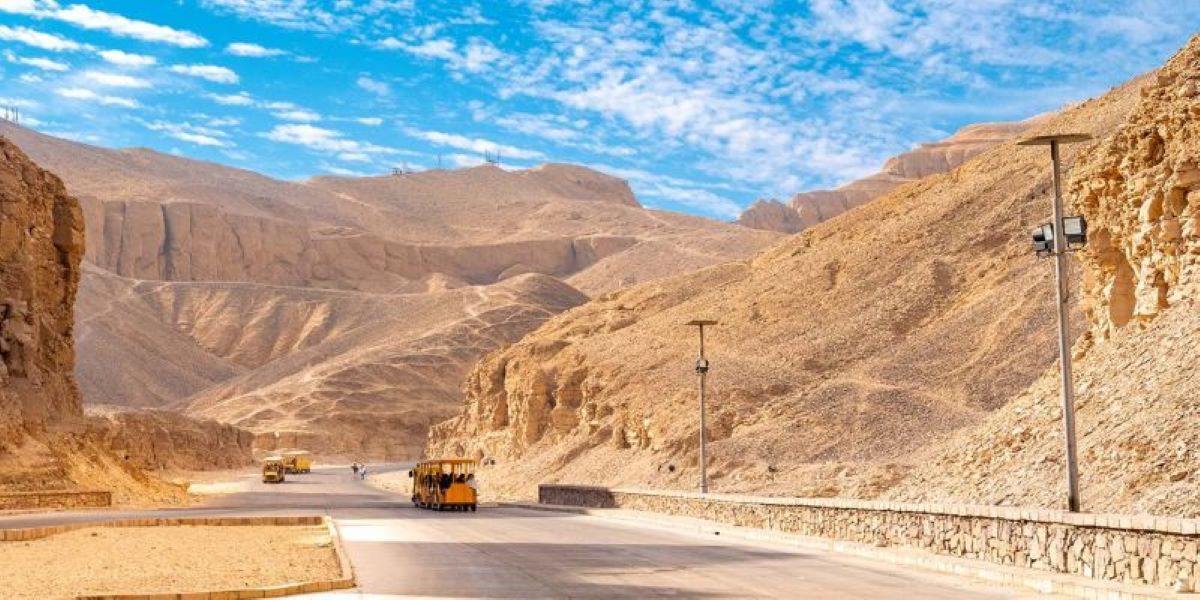
- After enjoying a hearty breakfast in the morning, you will embark on your captivating Cairo, Luxor and Alexandria tour with your knowledgeable tour guide. Your day will commence with a tour of Luxor's West Bank, beginning with a visit to the awe-inspiring Valley of the Kings. This historic site, nestled in the heart of a mountain, served as the final resting place for the esteemed rulers and queens of Egypt's New Kingdom (1570-1070 BC). Designated as a UNESCO World Heritage Site in 1979, the valley contains 63 elaborate tombs adorned with magnificent artefacts, statues, and enchanting decorations. Among the most renowned tombs are Rameses II, Amenhotep I, Hatshepsut, and the famous boy king Tutankhamun.
Tour to the Mortuary Temple of Hatshepsut

- The Hatshepsut Temple, also known as Djeser-Djeseru (Holy of Holies), is celebrated as the most striking architectural masterpiece of ancient Egyptian civilization. Constructed in 1479 BC during the New Kingdom (1550-1070 BC), it stands as a testament to the devotion of Queen Hatshepsut to the god Amun as well as her remarkable power and charisma, solidifying her status as one of the most accomplished rulers in ancient Egyptian history. This noteworthy temple follows the principles of Classical Architecture and is adorned with remarkable statues, intricate decorations, and breathtaking art pieces.
Tour to the Colossi of Memnon

- The Colossi of Memnon, commissioned by Amenhotep III between 1386 and 1350 BC, were intended to serve as the imposing guardians of Luxor. These awe-inspiring twin statues, towering at a height of 18 meters (60 feet) and weighing 720 tons each, are crafted in the likeness of the Pharaoh himself. Although they suffered damage from a severe earthquake in 27 BC, they were restored in 199 AD. The colossi gained widespread fame during the Greco-Roman period due to an intriguing phenomenon known as the "Vocal Memnon," where the statues would emit a melodic sound at dawn, believed to be caused by the wind passing through the stone.
Tour to the Grand Egyptian Museum
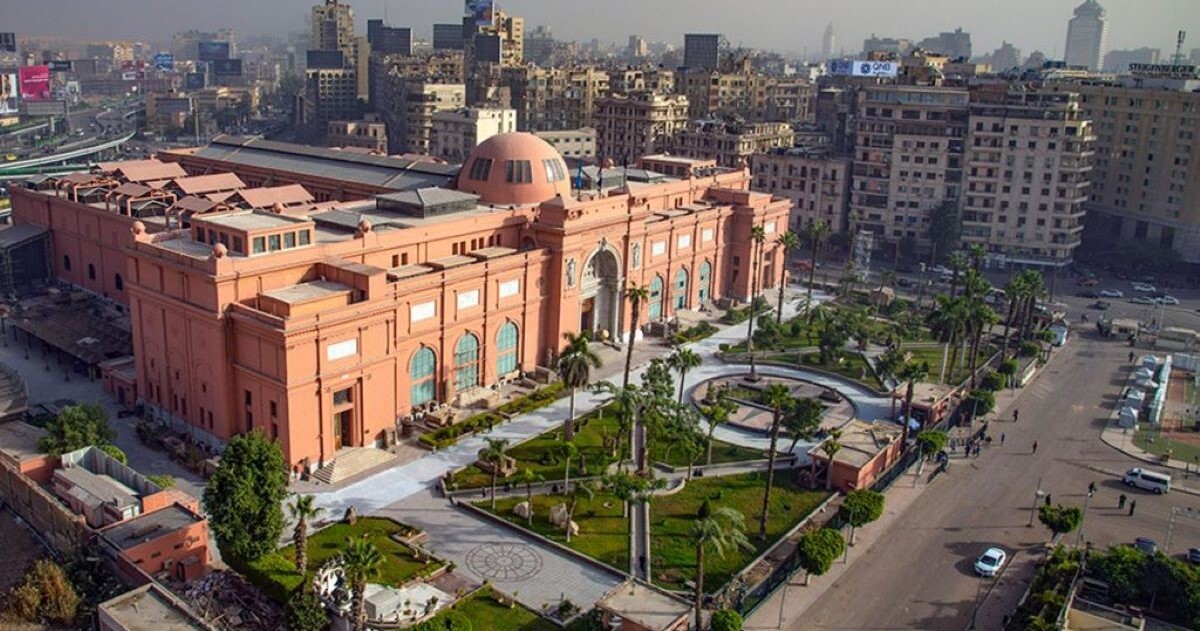
- After savouring a delightful breakfast at the hotel, you will be escorted to Luxor Airport for your flight to Cairo. Upon your arrival in Cairo, you will embark on an enriching tour of the city's iconic landmarks, commencing with a visit to the world-famous Egyptian Museum.
- The Egyptian Museum serves as the guardian and custodian of the captivating wonders and enigmatic secrets of ancient Egyptian civilization. Established in 1901, the museum stands as a timeless testament to Egypt's rich history. Its vast collection of monuments and artefacts spans over 4000 years, offering glimpses into significant periods of ancient history.
- Get ready to savour a delightful lunch at a quaint local eatery in Cairo before setting off on a captivating journey to discover the historical marvels of the city.
Tour to Citadel of Sultan Salah al-Din al-Ayyubi

- The Salah El-Din Citadel stands as an enduring symbol, having protected the city for centuries, earning the moniker of the Cairo Citadel. Constructed in 1182 AD by the esteemed leader Salah El Din, this impressive fortress served as a stronghold against the Crusaders and the French invasion led by Napoleon. For more than 700 years, it also served as the seat of the government. The Citadel is a treasure trove of allure and mystique, hosting numerous museums and exquisitely designed edifices within its walls.
- Behold the grandeur of Mohamed Ali Mosque, a masterpiece crafted from alabaster, earning it the moniker of the alabaster mosque. Constructed between 1830 and 1848 AD, this architectural marvel was envisioned as a replica of the Blue Mosque in Istanbul, symbolizing independence and freedom from the Ottoman Empire. The mosque showcases Ottoman-style architecture infused with French rococo influences and features a breathtaking dome. Notably, it boasts an ornate brass clock, a gift from King Louis Philippe of France to Muhammad Ali in 1845, exchanged for an obelisk that now graces the Concorde square in Paris, alongside a Turkish ablutions fountain reminiscent of a colossal Easter egg.
Tour to the National Museum of Egyptian Civilization

- The National Museum of Egyptian Civilization (NMEC) embarks on a golden odyssey through the 5000-year-old tapestry of ancient Egyptian history and culture. Here, Egypt's enduring magic and brilliance come to life, waiting to be explored. Nestled in the heart of Old Cairo in Fustat, this museum opened its doors to the public at the beginning of 2020.
Tour to Khan El Khalili Bazaar
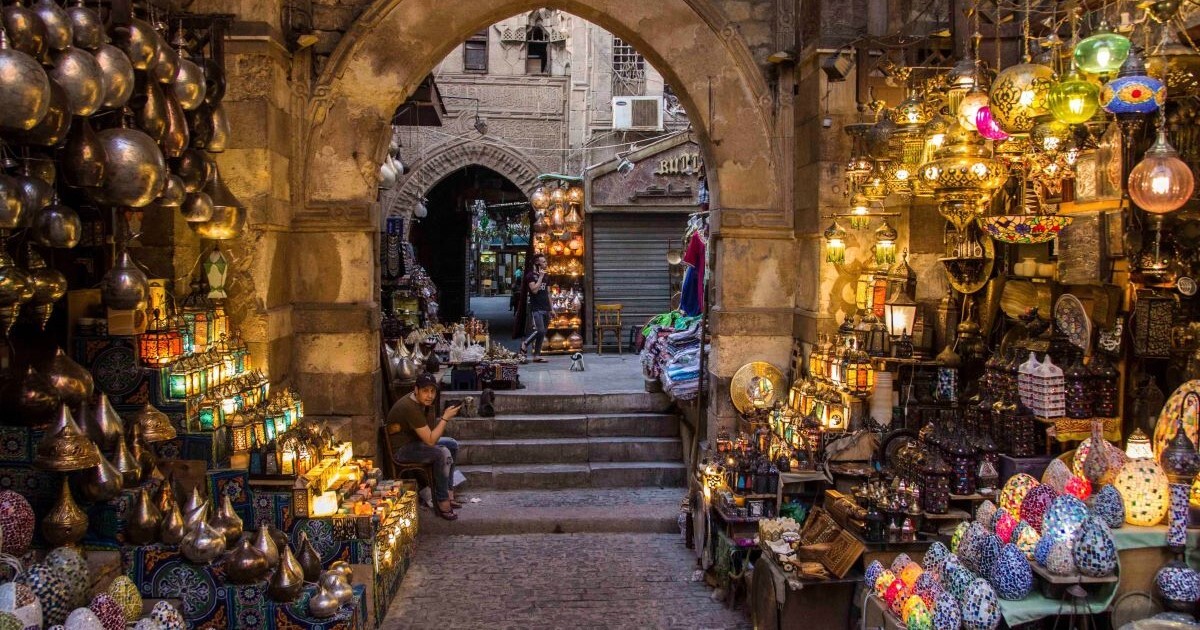
- Delve into the timeless allure of Khan El Khalili Bazaar, a living testament to the past that continues to thrive today. The renowned bazaar is hailed as the golden brick road of the Middle East and stands as the oldest active market in the region, with origins dating back to 970 AD. Its labyrinthine streets are adorned with exquisite Islamic architectural designs and adornments, preserving a splendid vintage charm. Today, the bustling thoroughfare offers a delightful array of goods alongside centuries-old cafes and shops, ensuring an authentic and immersive experience.
- As daylight wanes, retire to your hotel in Cairo to unwind and recharge for the night.
Tour to the rock-cut Roman catacombs of Kom El Shoqafa

- On the sixth day of your adventure in Egypt, start the morning with a delicious breakfast before embarking on a journey to the stunning city of Alexandria, known as the pearl of the Mediterranean Sea. Immerse yourself in Alexandria's rich history and captivating beauty as you explore its remarkable tourist attractions.You will be transferred to Alexandria in a private air-conditioned vehicle.
- Our day in Alexandria will be dedicated to exploring the fascinating rock-cut Roman catacombs of Kom El Shoqafa. These catacombs, the largest in Alexandria and regarded as one of the Seven Wonders of the Middle Ages, offer a unique and enriching experience. The necropolis comprises a collection of tombs, statues, and archaeological artefacts that blend Pharaonic funerary traditions with Hellenistic and early Imperial Roman influences. Serving as a burial site from the 2nd to the 4th century, the catacombs house three sarcophagi and various human and animal remains. The central shaft, adorned with six pillars, leads to a vestibule, a triclinium, and a temple-like facade featuring two columns decorated with papyrus, lotus, and acanthus leaves. A visit to the catacombs of Kom El Shoqafa offers an excellent opportunity to delve into the ancient world's history, architecture, and culture.
Tour to Pompey's Pillar
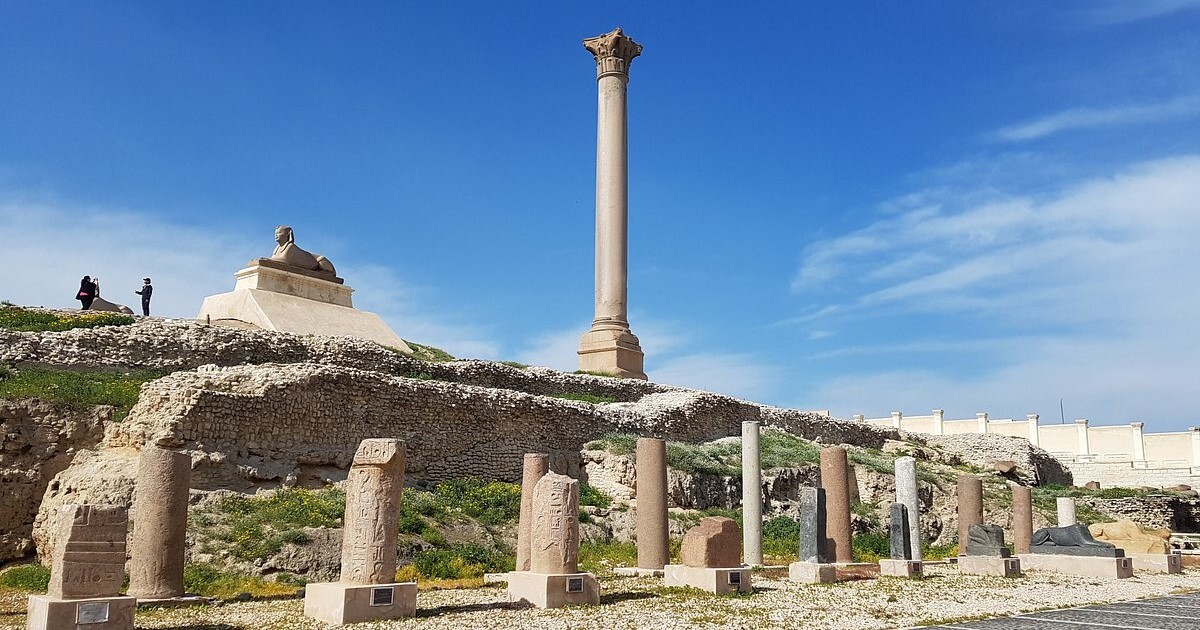
- Pompey's Pillar, located in Alexandria, Egypt, is a monumental ancient structure renowned for being the largest of its kind globally. It is the sole remaining monument from the ancient city of Alexandria. The Pillar, a single 25-meter tall column of red granite, is thought to have been constructed to honour the victories of the Roman Emperor Diocletian in the region. Adorned with inscriptions depicting the Roman eagle and dedicated to Diocletian himself, the Pillar Pillaro is believed to have been erected on the remnants of the Pillar, an Egyptian god Serapis temple. Pompey's Pillar is a vital archaeological site that provides profound insight into the history of ancient Alexandria.
Tour to Citadel of Qaitbay
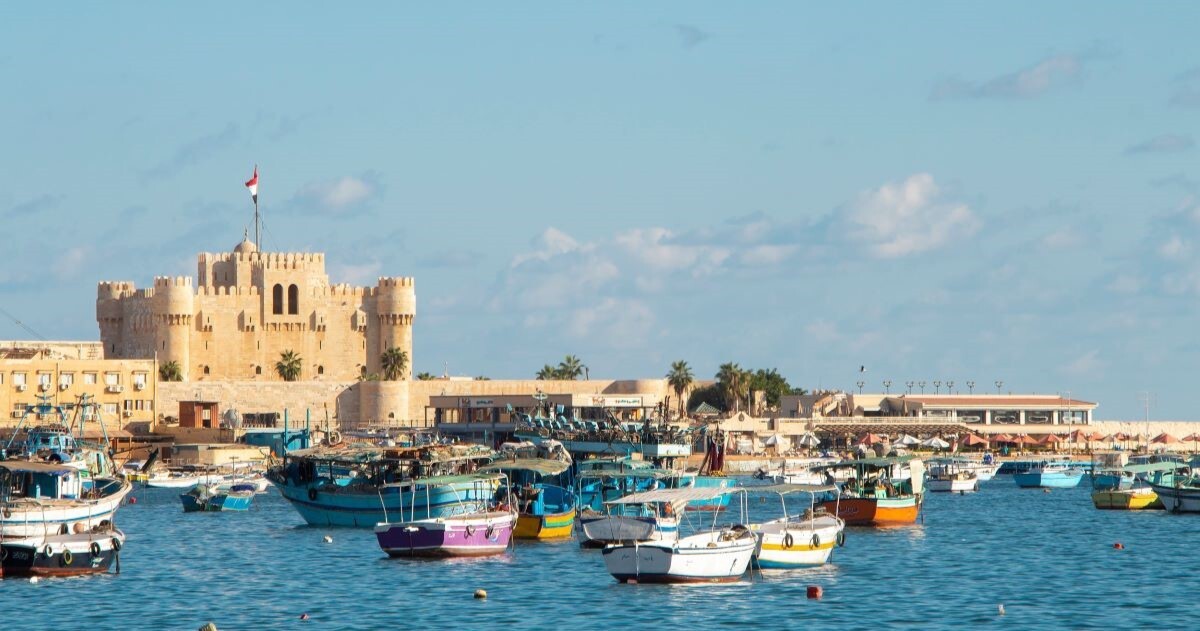
- The Citadel of Qaitbay, built between 1477 and 1479 AD by Sultan Qaitbey, stands as a 15th-century fortress on the coast of the Mediterranean Sea in Alexandria, Egypt. Its purpose was to safeguard the city from the expansion of the Ottoman Empire. Positioned on a narrow landmass extending into Alexandria's harbour from the corniche, the fortress comprises a square enclosure with stone walls and eight towers, four semicircular and the others rectangular. The Citadel also hosts a small naval museum, and the peninsula leads to the Citadel's popular spot for fishermen and families. A visit to the Citadelbay provides an excellent opportunity to delve into the history and culture of ancient Alexandria.
Tour to the Great Library of Alexandria
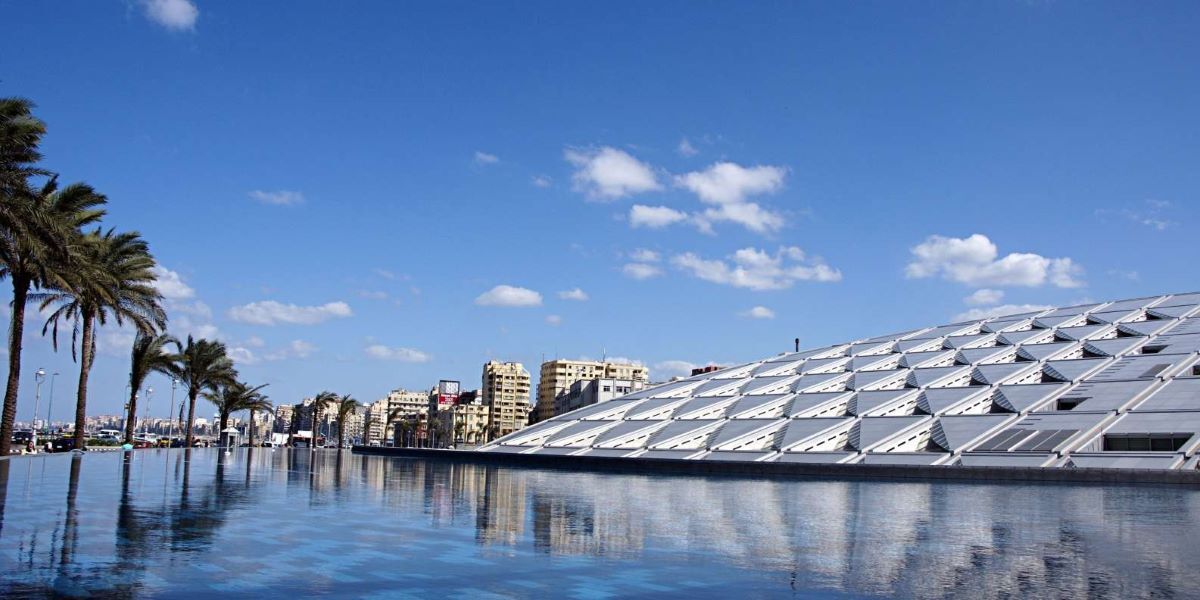
- The Great Library of Alexandria in Egypt was one of the ancient world's most important and extensive libraries. It was probably established under Ptolemy II Philadelphus in the third century BCE. During that time, written material mainly consisted of papyrus scrolls since paper, as we know it today, was not invented for another four centuries! The exact number of materials stored in the library is uncertain, but historical sources suggest there were 40,000 to 400,000 papyrus scrolls at the library's peak.
- After experiencing an incredible day tour in Alexandria, take the journey back to your hotel in Cairo, where you can relax and unwind for the night.
- On the last day of your unforgettable Cairo, Luxor and Alexandria tour, you'll savour a delicious breakfast at the hotel, soaking in the final moments of your Egyptian adventure. Afterwards, our dedicated representative will accompany you to Cairo airport, ensuring you have a seamless and comfortable journey home.






